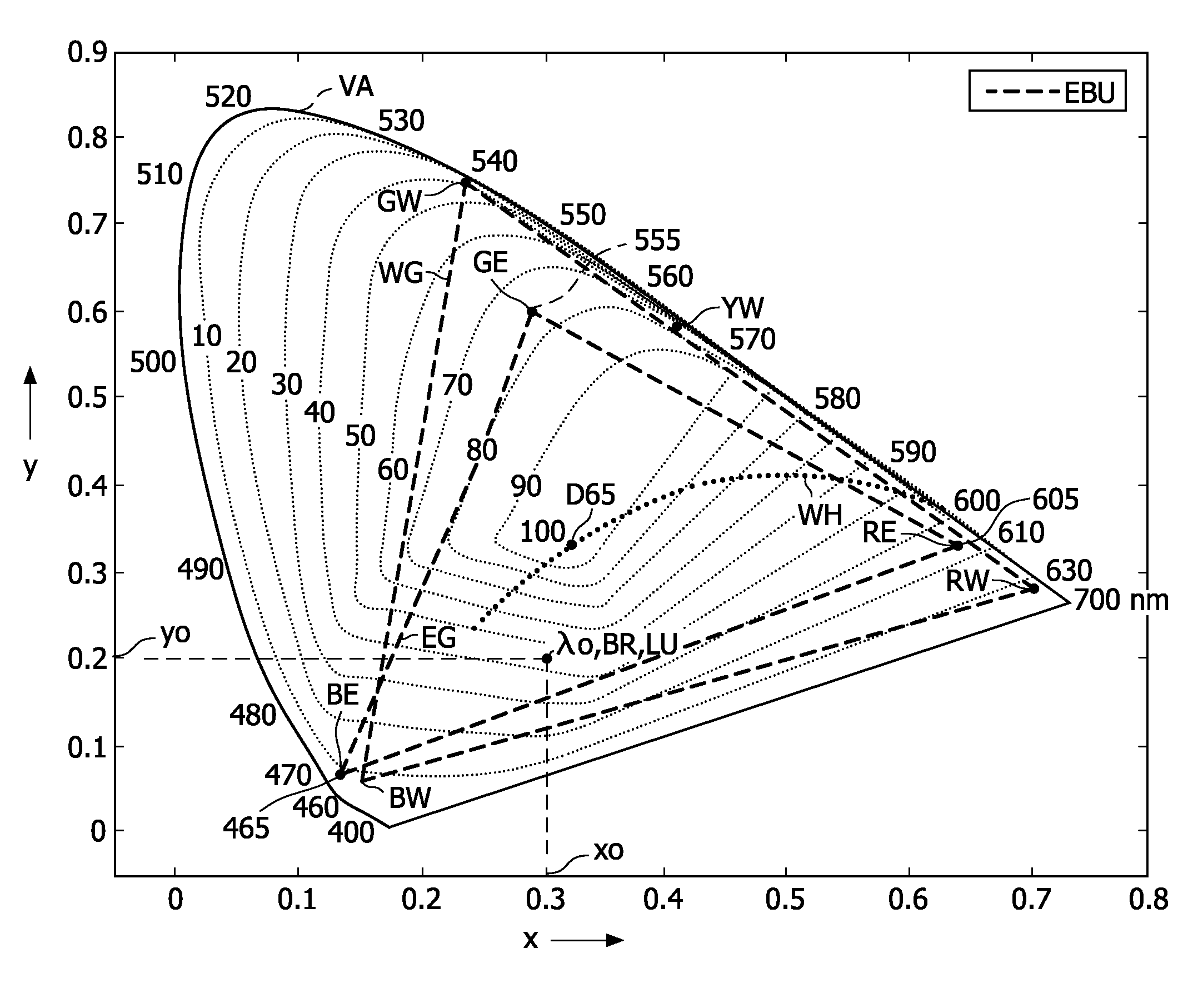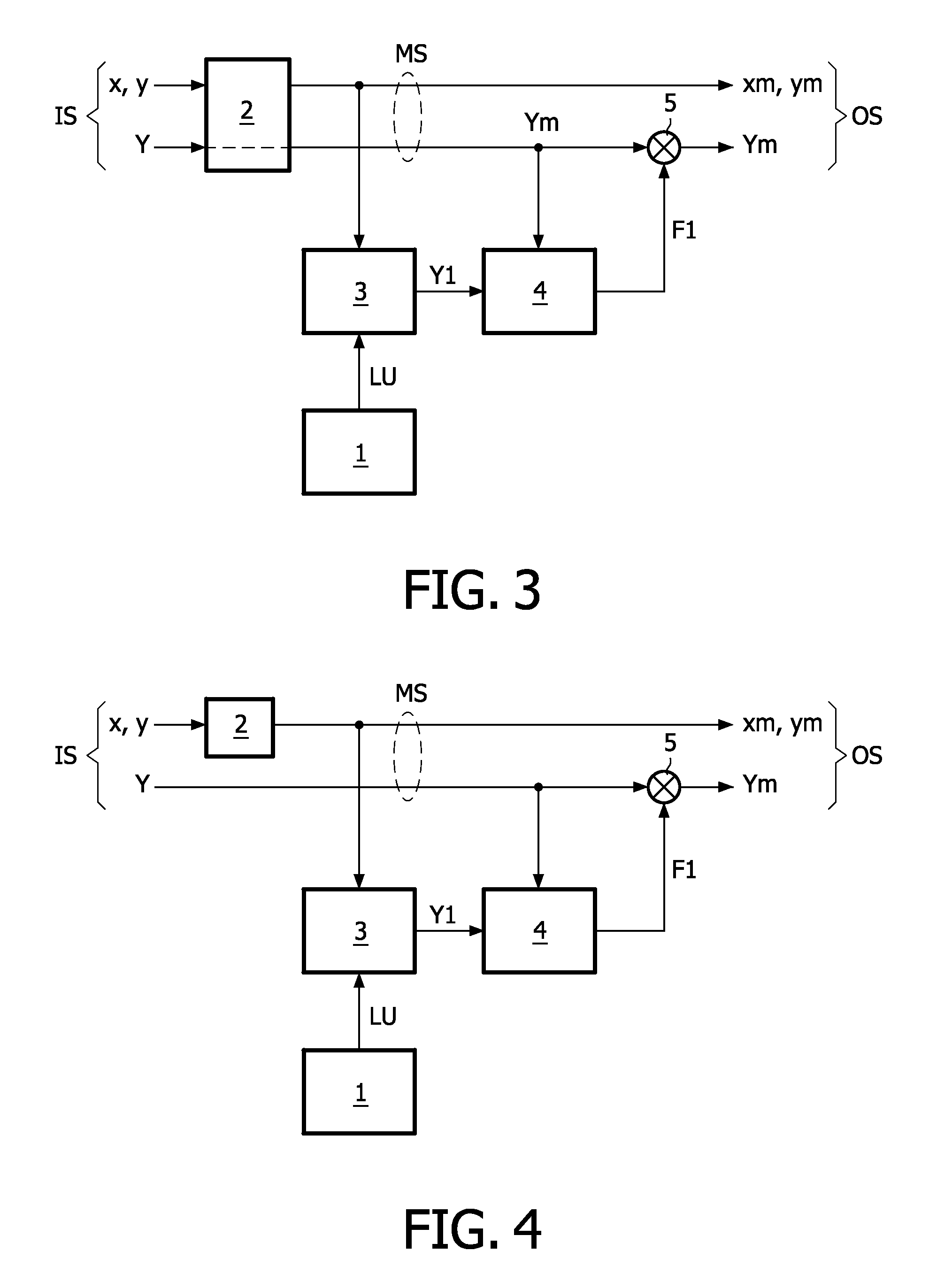Color mapping method
- Summary
- Abstract
- Description
- Claims
- Application Information
AI Technical Summary
Benefits of technology
Problems solved by technology
Method used
Image
Examples
Embodiment Construction
[0042]FIG. 1 schematically shows equal luminance loci of the reflective spectra in the “horse shoe” visible color space of the xy-chromaticity plane. The CIE 1931 x chromaticity coordinate is depicted along the horizontal axis, and the CIE 1931 y chromaticity coordinate is depicted along the vertical axis. The “horse shoe” locus VA indicates the boundary of visible colors. Colors with xy chromaticity coordinates on the locus VA are the 100% saturated colors which are also referred to as the monochromatic colors because the spectra of these colors comprise only a single wavelength. The numbers along the locus VA indicate the wavelength in nm. With the EBU primaries red RE, green GE and blue BE all the colors with xy chromaticity coordinates within the triangle EG of which the primaries RE, GE, BE are the vertices can be displayed. The white colors have xy chromaticity coordinates which lie on the curve WH. For example, white D65 is indicated.
[0043]As is well known from displays which...
PUM
 Login to View More
Login to View More Abstract
Description
Claims
Application Information
 Login to View More
Login to View More - R&D
- Intellectual Property
- Life Sciences
- Materials
- Tech Scout
- Unparalleled Data Quality
- Higher Quality Content
- 60% Fewer Hallucinations
Browse by: Latest US Patents, China's latest patents, Technical Efficacy Thesaurus, Application Domain, Technology Topic, Popular Technical Reports.
© 2025 PatSnap. All rights reserved.Legal|Privacy policy|Modern Slavery Act Transparency Statement|Sitemap|About US| Contact US: help@patsnap.com



